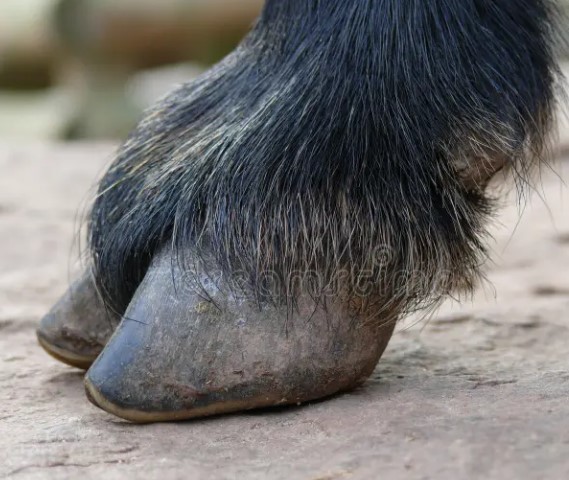Anorexia threatens "spring" children

The report, published in the British Journal of Psychiatry, says the causes could be varied: seasonal changes in temperature, exposure to sunlight, a cold infection, or the mother's diet during pregnancy. However, not all researchers tend to share this opinion: according to them, there are a number of other factors, according to the BBC.
Experts analyzed data on 1293 patients with this disorder and found that most of them were born between March and June. Least of all in this group were those born in September and October.
“Previous work on disorders has shown that diseases such as schizophrenia, bipolar disorder (characterized by cyclical disturbances in mood, cognition and behavior) and depression are most common among those born in the spring, so our finding regarding anorexia was not surprising. ", - says the HEAD of the study, Dr. Lahiru Handunetti.
The reason for this connection cannot yet be explained, however, according to L. Handunetti, further research will help uncover this mystery. As the authors note, the seasonal nature of anorexia is also confirmed by other studies, which show that the development of eating disorders in a person is associated with the time of year in which he was born. "Identification of risk factors will help us understand and possibly even prevent the disease in the future," says L. Handunetti.
Anorexia nervosa is an eating disorder characterized by intentional weight loss, caused and maintained by the patient himself, in order to lose weight or to prevent weight gain. The patient has a distorted perception of their physical form and there is a concern about weight gain, even if this is not actually observed.
The overall prevalence of anorexia nervosa is 1.2% in women and 0.29% in men. About 90% of patients with anorexia are girls aged 12-24 years.
Follow RBC news on social networks:Read together with it:
- He crawled to the icon with prayer. The true story of a man who overcame drug addiction.Alexander Ovchinnikov. Topic News. Our project's hero was a drug addict for many years. The thought that this was a dead end never left him, but his addiction proved stronger. One day, when he could no longer walk, he crawled to an icon in prayer. This became his first step toward a new life. Today, he heads a charity center that helps those who have given up hope and are unable to quit ALCOHOL an...
- Scientists have identified a human virus comparable to COVID-19.The human respiratory syncytial virus (RSV) may be comparable in severity to influenza and CORONAVIRUS. This is the conclusion reached by Singaporean researchers collaborating as part of the PREPARE program, according to the press service of the Singapore General Hospital. Scientists conducted three studies to assess the severity of the disease, the risk of cardiac complications, and its long-term...
- Курчатовский институт разработал новую систему геномной селекции для сельскохозяйственных животныхГенотипирование, необходимое для оценки племенной ценности животных, позволит селекционно-генетическим центрам и производителям мяса лучше анализировать такие параметры, как скорость роста, жирность мяса и устойчивость к болезням. Ранее отечественные хозяйства были вынуждены зависеть от западных компаний, что создавало риски для продовольственной безопасности России. Новая система обеспечивает пол...
- Роспотребнадзор объявил о регистрации экспресс-теста на гепатит CСпециалисты Центрального НИИ эпидемиологии Роспотребнадзора создали первый в мире экспресс-тест для выявления вирусного гепатита C, основанный на технологии петлевой изотермической амплификации (LAMP), сообщила пресс-служба ведомства. «Новый тест позволяет определить наличие вируса всего за 25–30 минут», — отметили в институте. Гепатит C передается через кровь и при отсутствии лечения способен при...
- A Call for Détente, an African Strategy, the Village of the Future, and the Lithuanian Scam: A Summary of the President's WeekALEXANDER LUKASHENKO at a meeting on developing cooperation with African countries Alexander Lukashenko at the III MINSK International Conference on Eurasian Security Alexander Lukashenko during a working trip to the Vitebsk region and a visit to the Berezina Biosphere Reserve Alexander Lukashenko at a meeting on developing cooperation with African countries Alexander Lukashenko at the III Minsk I...
- Ученые узнали о способности прививки от COVID продлевать жизнь при ракеВакцины от коронавируса на основе мРНК продлевают жизнь пациентам с онкологией на последних стадиях, выяснили ученые из США. Препараты активизируют иммунную систему. В итоге вакцинированные прожили почти в два раза дольше обычного Вакцины от коронавируса продлевают жизнь пациентам с онкологией. К такому выводу пришли исследователи из американского центра MD Anderson в Хьюстоне. Результаты исследов...




























































